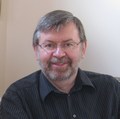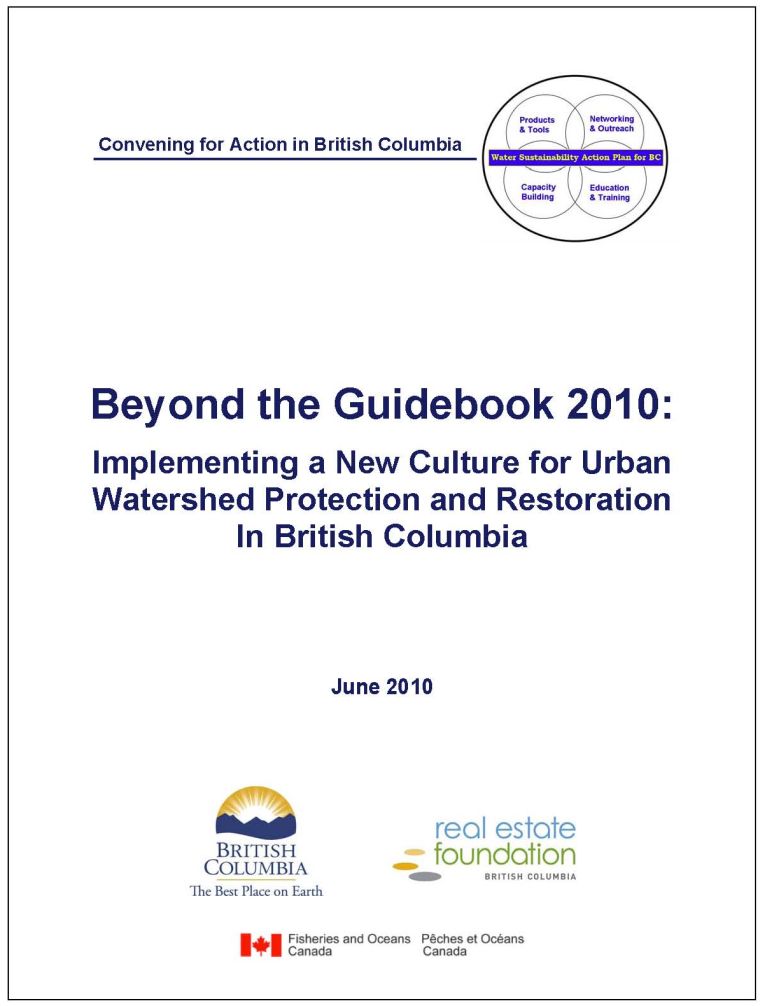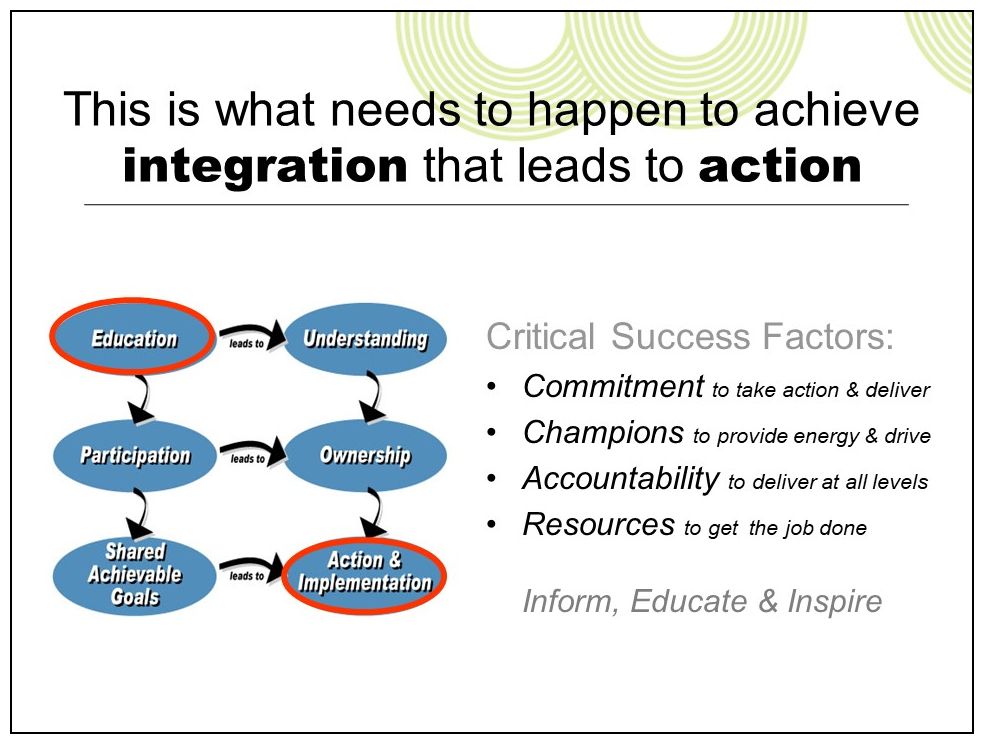BC HYDRO POWER SMART FORUM: “Create a shared vision of a future where we actually balance ecology and land development activities. Collaborate and align efforts to achieve the vision,” stated Ray Fung when he described the purpose of a regional team approach (October 2010)
Note to Reader:
Released in February 2004, the Water Sustainability Action Plan for British Columbia introduced a framework for building partnerships and demonstrating what can be achieved through a ‘top-down & bottom-up strategy’ that aligns efforts at the provincial, regional and local scales to respond and adapt to a changing world.
2010 was a ‘watershed year’ for the Water Sustainability Action Plan, with outreach taking place at 10 major events in three regions, to provide peer-based learning for Living Water Smart, Building Greener Communities, and Adapting to a Changing Climate. The eighth of these events was a conference in October 2010, organized by BC Hydro and held at the Vancouver Convention Centre……

2010 BC Hydro Power Smart Forum
The Power Smart Forum is BC’s leading energy conservation conference, attracting delegates, speakers and industry experts from across North America. The technical program for the Power Smart Forum has three streams: Commercial / Institutional, Industrial, Community / Government. The last stream included a session delivered by the Action Plan team.
A 6-person Action Team comprising Kim Stephens, Ray Fung, Ted van der Gulik, Glen Brown, Eric Bonham and Mike Tanner collaborated to develop and deliver a module built around Beyond the Guidebook 2010. The actual presentation was then delivered by Kim, Ray and Mike. Their key message was:
“We now have the tools and experience to ‘design with nature’. We believe that BC is now at a tipping point. Implementation of a new culture for urban watershed protection and restoration is within our grasp.”
“ Changing the way we develop land depends on establishing higher expectations and challenging practitioners to embrace shared responsibility. Circa 2000, key folks within British Columbia provincial government ministries collectively made a conscious decision to follow an educational rather than prescriptive path to achieve the goal for greener communities. The Beyond the Guidebook 2010 session at the BC Hydro Power Smart Forum explained why and illustrated how breakthroughs happen when decision-makers in government collaborate with grass-roots visionaries in the community,” recalls Kim Stephens, Executive Director, Partnership for Water Sustainability in BC.
Changing the way we develop land depends on establishing higher expectations and challenging practitioners to embrace shared responsibility. Circa 2000, key folks within British Columbia provincial government ministries collectively made a conscious decision to follow an educational rather than prescriptive path to achieve the goal for greener communities. The Beyond the Guidebook 2010 session at the BC Hydro Power Smart Forum explained why and illustrated how breakthroughs happen when decision-makers in government collaborate with grass-roots visionaries in the community,” recalls Kim Stephens, Executive Director, Partnership for Water Sustainability in BC.
To Learn More:
Download a copy of the Abstract for the Action Plan session.
Download a copy of the integrated PowerPoint presentation by Kim Stephens, Ray Fung and Mike Tanner that guided the sharing and learning at the BC Hydro PowerSmart Forum in November 2010.
To read the complete set of story of stories posted elsewhere on the Convening for Action community-of-interest, click on 2010 BC Hydro Power Smart Forum.

Implementing a New Culture for Urban Watershed Protection and Restoration in British Columbia
 The Partnership’s outreach spotlight in 2010 was on the release and rollout of the second in the Beyond the Guidebook series of guidance documents for rainwater management and restoration of hydrologic function in urban watersheds.
The Partnership’s outreach spotlight in 2010 was on the release and rollout of the second in the Beyond the Guidebook series of guidance documents for rainwater management and restoration of hydrologic function in urban watersheds.
Stormwater Planning: A Guidebook for British Columbia, released in June 2002, laid the groundwork for ‘designing with nature’ to create greener communities, live water smart and prepare for climate change. Beyond the Guidebook 2010 built on the Guidebook foundation and illustrated how breakthroughs happen when decision-makers in government collaborate with grass-roots visionaries in the community.
Beyond the Guidebook 2010 describes how a ‘convening for action’ culture has taken root in British Columbia. Bringing together local government practitioners in neutral forums has enabled implementers to collaborate as regional teams. Their action-oriented focus has resulted in ‘how to do it’ examples that help decision-makers visualize what ‘design with nature’ policy goals look like on the ground.
To Learn More:
Download a copy of Beyond the Guidebook 2010: Implementing a New Culture for Urban Watershed Protection and Restoration in British Columbia

YouTube Videos
Watch Kim Stephens explain why B.C. is at a tipping point in terms of adapting to climate change (10:30 minutes)
“Beyond the Guidebook 2010 opens with a photo collage of the Chairs of the six inter-governmental partnership initiatives. It is not a technical document. Instead, it tells the stories of what champions in British Columbia are doing to change the ways that communities develop land. This is the result of a decision made a decade ago to follow an educational rather than prescriptive path. It takes time to change the culture. Beyond the Guidebook 2010 is the story of what local governments are accomplishing on the ground,” stated Kim Stephens, Partnership Executive Director.

Watch Ray Fung explain a 4-step process for moving from awareness to action (13:30 minutes)
 “In BC we have attempted to change expectations and build practitioner capacity. The Action Plan is a combination of four different streams of effort, ranging from networking to development of web-based tools. What we have found through experience is the need to provide neutral forums for people to come together. A lot of the time, when a government puts something together, people come in with biases. In a neutral forum we can advance a regional team approach. We all have a stake; and we all have a role,” stated Ray Fung.
“In BC we have attempted to change expectations and build practitioner capacity. The Action Plan is a combination of four different streams of effort, ranging from networking to development of web-based tools. What we have found through experience is the need to provide neutral forums for people to come together. A lot of the time, when a government puts something together, people come in with biases. In a neutral forum we can advance a regional team approach. We all have a stake; and we all have a role,” stated Ray Fung.
“To help local governments focus on how move from awareness to action, the Partnership has developed what we call the What / So What / Then What / Now What process.”

Watch Mike Tanner tell the story of the waterbucket.ca website (10:30 minutes)
 “The waterbucket.ca website was developed to support the Action Plan, and was launched with a ministerial announcement in 2005. The site is owned by the Partnership for Water Sustainability. What makes the website distinctive is that it is three-dimensional. First, it is a news magazine for raising awareness of success stories. Secondly, it has a growing library of information and resources on the BC experience. And thirdly, it houses a number of ‘made in BC’ tools used by practitioners on the ground,” explained Mike Tanner, Chair of the Waterbucket.ca Partnership.
“The waterbucket.ca website was developed to support the Action Plan, and was launched with a ministerial announcement in 2005. The site is owned by the Partnership for Water Sustainability. What makes the website distinctive is that it is three-dimensional. First, it is a news magazine for raising awareness of success stories. Secondly, it has a growing library of information and resources on the BC experience. And thirdly, it houses a number of ‘made in BC’ tools used by practitioners on the ground,” explained Mike Tanner, Chair of the Waterbucket.ca Partnership.

Watch Ray Fung explain what it means to “choose to be enabled” (3:20 minutes)
“Over the past decade, we have been going beyond the 2002 Guidebook in terms of creating a culture for urban watershed change and restoration. Choose to be enabled. Don’t wait to be told what to do. Establish high expectations. Create a shared vision of a future where we actually balance ecology and land development activities. Collaborate and align efforts to achieve the vision. Celebrate innovation. Most importantly, promote shared responsibility because we all have a role to play in changing the land ethic,” concluded Ray Fung.


